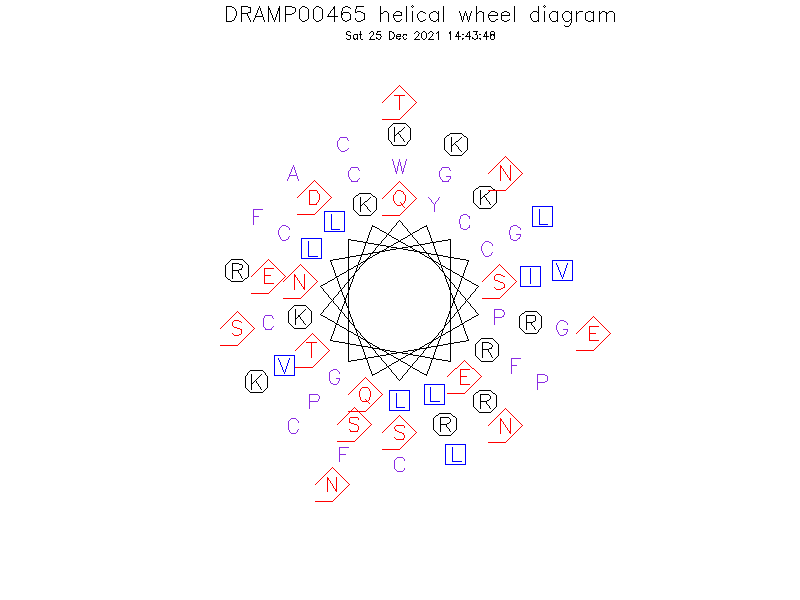General Information
-
DRAMP ID
- DRAMP00465
-
Peptide Name
- Defensin-like protein 9 (Protein LCR76; Plant defensin)
-
Source
- Arabidopsis thaliana (Mouse-ear cress)
-
Family
- Belongs to the DEFL family
-
Gene
- LCR76
-
Sequence
- QPQLCETKSLNYRGLCLKWRSCKRVCISEGFPDGRCKGFFNNKCVCRKPCALLSTEN
-
Sequence Length
- 57
-
UniProt Entry
- P82785
-
Protein Existence
- Homology
Activity Information
-
Biological Activity
- Antimicrobial, Antifungal
-
Target Organism
- No MICs found in DRAMP database
-
Hemolytic Activity
-
- No hemolysis information or data found in the reference(s) presented in this entry
-
Cytotoxicity
-
- Not included yet
-
Binding Target
- Not found
Structure Information
-
Linear/Cyclic
- Not included yet
-
N-terminal Modification
- Not included yet
-
C-terminal Modification
- Not included yet
-
Nonterminal Modifications and Unusual Amino Acids
- Not included yet
-
Stereochemistry
- Not included yet
-
Structure
- Bridge
-
Structure Description
- Not found
-
Helical Wheel Diagram
-
PDB ID
- None
-
Predicted Structure
- There is no predicted structure for DRAMP00465.
Physicochemical Information
-
Formula
- C280H453N85O79S8
Absent Amino Acids
- HM
Common Amino Acids
- C
Mass
- 6530.68
PI
- 9.22
Basic Residues
- 11
Acidic Residues
- 4
Hydrophobic Residues
- 14
Net Charge
- +7
-
Boman Index
- -123.97
Hydrophobicity
- -0.495
Aliphatic Index
- 59.82
Half Life
-
- Mammalian:0.8 hour
- Yeast:10 min
- E.coli:>10 hour
Extinction Coefficient Cystines
- 7490
Absorbance 280nm
- 133.75
Polar Residues
- 23
DRAMP00465

Comments Information
PTM
- Contains four disulfide bonds 5-50;16-36;22-44;26-46.
Literature Information
- ·Literature 1
-
Title
- Two large Arabidopsis thaliana gene families are homologous to the Brassica gene superfamily that encodes pollen coat proteins and the male component of the self-incompatibility response.
-
Pubmed ID
- 11437247
-
Reference
- Plant Mol Biol. 2001 May;46(1):17-34.
-
Author
- Vanoosthuyse V, Miege C, Dumas C, Cock JM.

